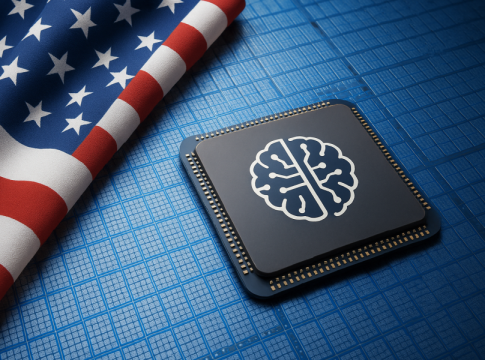The Semiconductor Challenge: Navigating AI’s Growing Demand
In recent weeks, a storm of headlines has erupted over the potential imposition of U.S. tariffs on semiconductor imports. While such tariffs could trigger major disruptions reminiscent of the chaotic supply chain issues seen during the COVID-19 pandemic, many experts believe their enactment is unlikely. The automotive backlog of unfinished cars still lingers in the collective memory, and few are eager to relive that kind of turmoil.
The Importance of Semiconductor Self-Reliance
Despite the tariff debates, it’s essential for U.S. businesses and the economy to bolster self-reliance in semiconductor manufacturing. This effort is particularly crucial as America strives to maintain its slim edge in cutting-edge artificial intelligence (AI) technology. The reality is clear: the AI race is, at its core, a battle for chip supremacy.
Semiconductors serve as the backbone for the servers that train powerful AI models. By year’s end, AI-focused semiconductors are projected to represent 19% of the global semiconductor market—up from just 7% in 2017. Increased dependence on these chips makes it all the more essential for the U.S. to lessen its reliance on international suppliers. This shift would not only enhance economic and national security but also foster technological independence.
Legislative Support for Local Manufacturing
Recently, bipartisan efforts in Congress have introduced the Securing Semiconductor Supply Chains Act of 2025. This legislation focuses on reducing dependence on foreign supply chains and aims to cultivate a robust domestic semiconductor industry. With the surging demand driven by generative AI and AI datacenters, it’s critical to ramp up local manufacturing capabilities to prevent any disruptions that could ripple through various sectors, including autonomous vehicles and robotics.
Advancements in Materials Discovery
To meet skyrocketing semiconductor demands, innovative methodologies in materials discovery are crucial. Traditional processes are time-consuming and costly, often reliant on overseas foundries. Enter direct local atomic layer processing, a cutting-edge digital manufacturing technique that builds components atom by atom. This approach not only simplifies the production process—reducing waste and complexity—but also enhances precision, enabling faster design cycles for developing new AI semiconductors.
Environmental Benefits
Moreover, these new manufacturing methods promise to be more environmentally friendly. The semiconductor industry has faced criticism for its significant ecological footprint, marked by greenhouse gas emissions and pollution from hazardous chemicals. By utilizing efficient techniques that minimize chemical usage and waste, the industry can scale responsibly, addressing both demand and environmental concerns.
A Collective Approach for the Future
Looking to the future, it’s crucial for the U.S. to pivot away from a model heavily reliant on a few large offshore foundries. A collaborative approach harnessing the nation’s rich tapestry of universities, startups, and industrial R&D can expedite innovation across the entire lifecycle—from research and prototyping to full-scale manufacturing.
AI and Semiconductor Synergy
The interplay between AI and semiconductor technology is increasingly interdependent. As semiconductors power the training of AI models, AI, in turn, accelerates materials discovery through inverse materials design. This technique employs machine learning to forecast the properties of prospective materials, paving the way for faster development of semiconductors that enhance computational efficiency.
Conclusion: Bridging the Gap
While challenges in semiconductors persist, newer techniques could very well reshape the landscape of AI technology. By marrying the precision of direct atomic layer processing with the predictive power of AI, the U.S. stands at the precipice of breakthroughs once deemed unattainable. As it invests in this vital sector, the nation not only fortifies its technological future but also ensures that AI’s immense potential is realized domestically, effectively keeping pace in a global race that shows no signs of slowing down.

Writes about personal finance, side hustles, gadgets, and tech innovation.
Bio: Priya specializes in making complex financial and tech topics easy to digest, with experience in fintech and consumer reviews.

